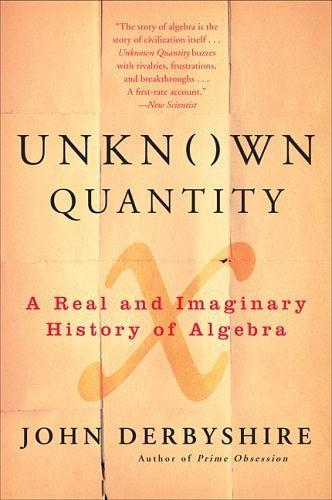拉普拉斯小妖
2020-02-12 14:35:49
This book's title is deceiving, for Derbyshire offers a very real and
very entertaining survey of the development of algebra. "Real" and
"imaginary" refer to types of numbers, and Derbyshire (Prime Obsession)
opens with a basic primer on the various flavors of numbers and
polynomials before looking at algebra's development over 3,000 years. As
he explains how algebraic notation wended its way from Sumerian
scratches on clay to such contemporary mathematical structures as
Calabi-Yau manifolds (used by Andrew Wiles to solve Fermat's Last
Theorem), Derbyshire introduces readers to the colorful figures who made
contributions: Hypatia, whose death in Alexandria at the hands of an
angry Christian mob marked the end of mathematics in the ancient world;
19th-century mathematician Hermann Grassmann, who published a 3,000-page
translation of the ancient Hindu text the Rig Veda after his work on
vector spaces was ignored; and Emanuel Lasker, more famous as the
longest-reigning world chess champion than for his contributions to ring
theory. This book will appeal to readers who relished the rigorous
mathematical discursions interspersed with informal historical vignettes
of David Berlinski's A Tour of the Calculus, but less mathematically inclined readers more interested in the history of science will also enjoy it.
